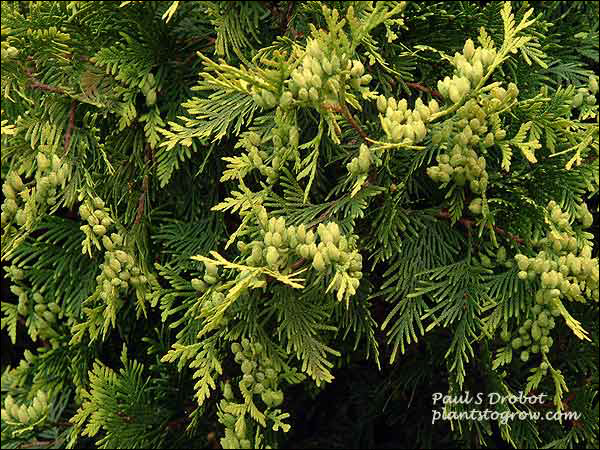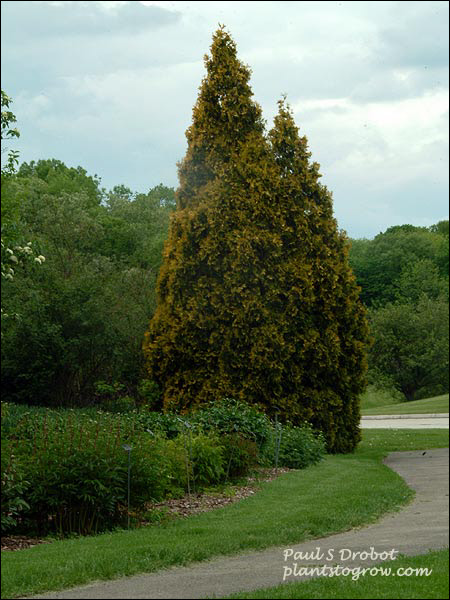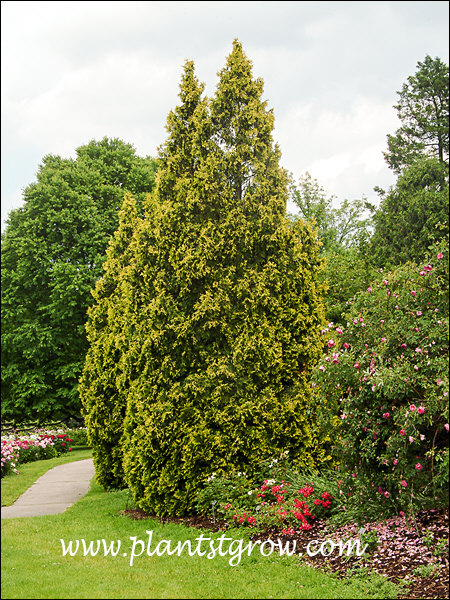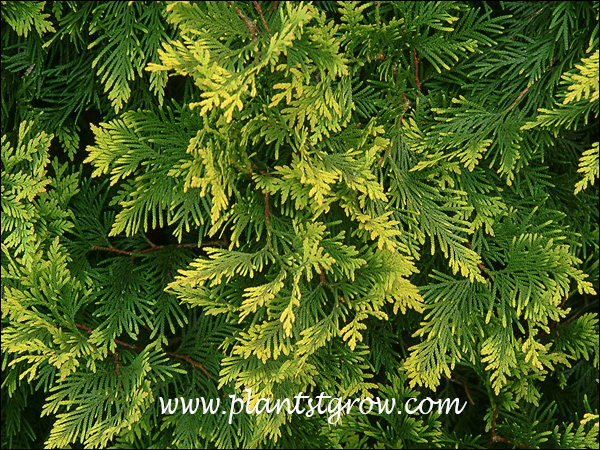| Description | George Peabody Arborvitae (Thuja occidentalis lutea) is a large pyramidal Arborvitae with golden yellow foliage. |
|---|---|
| Pronunciation | (thu-ya)(ok-si-den-TA-lis) |
| Plant Type | Shrubs Coniferous, Site author's observations |
| Hardiness Zone | 3-7 |
| Sunlight | full |
| Moisture | average |
| Soil & Site | average |
| Flowers | not ornamental |
| Fruit | small woody cones |
| Leaves | golden yellow, light yellowish green on the underside |
| Roots | fibrous |
| Dimensions | 30-36 feet tall |
| Maintenance | A light shearing may be needed to maintain size. Heavy snow can cause the plants to split and open up. I have tied them together to bring them back into shape. Like most Arborvitae it will accumulate a good amount of dead foliage in the center. I like to tap the plant with the flat side of a leaf rake to knock lose the brown foliage. All Arborvitae are among the easiest of the evergreen shrubs to transplant |
| Propagation | cuttings |
| Cultivar Origin | Developed before 1873 at the Henry H Maxwell Nursery in Geneva New York. |
| Misc Facts | AKA: Yellow eastern arborvitae, Yellow American arborvitae, Arborvitae Lutea, |
| Author's Notes | I have watched a couple of these grow for over the past 20 years at a local botanical gardens. I was at the park when they were being planted an now are over 20-25 feet tall. |
| Notes & Reference | #01-Manual of Woody Landscape Plants (Michael Dirr) ,#93-North American Landscape Trees (Arthur Lee Jacobson) |

Cart




